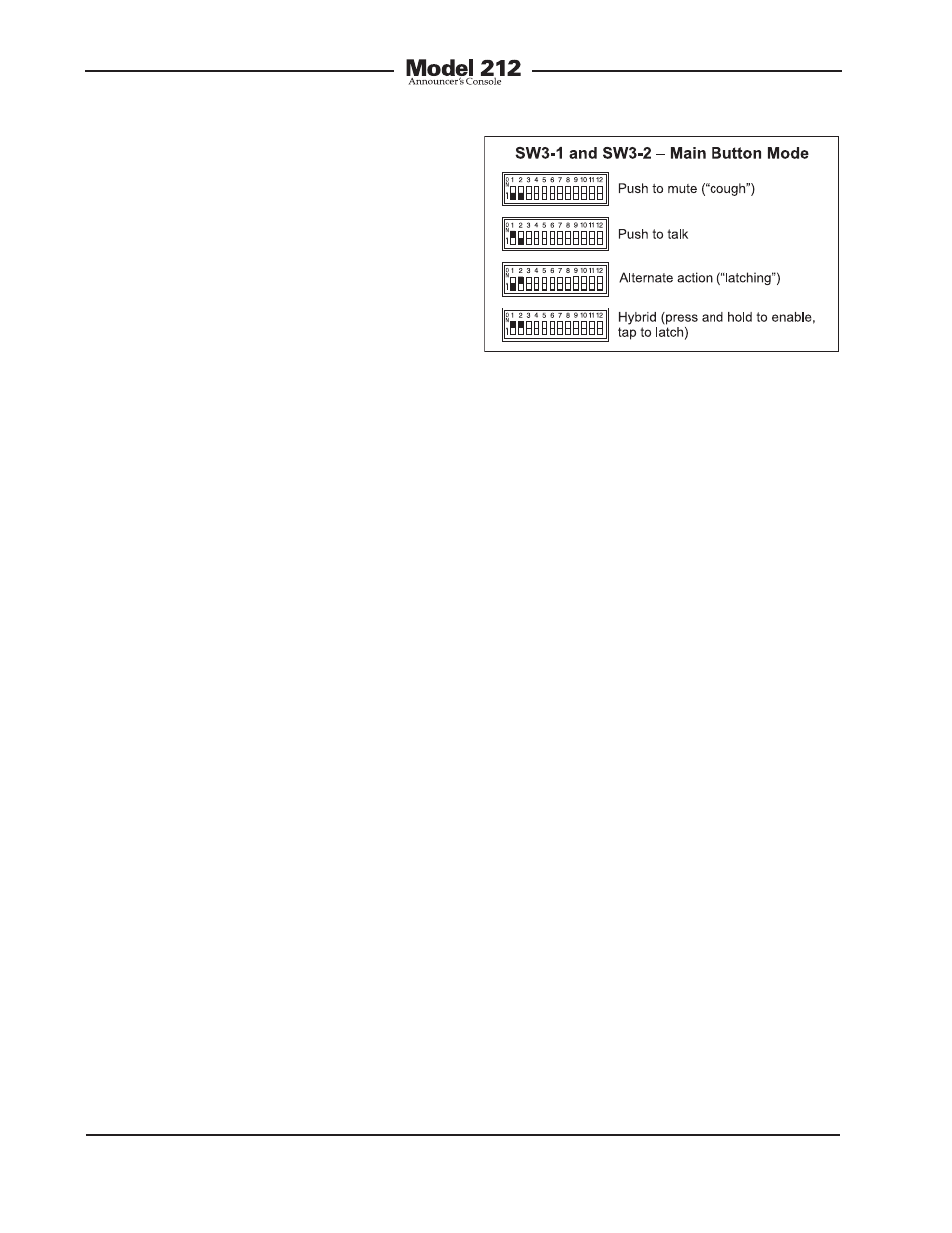Operating modes – Studio Technologies 212 2006 User Manual
Page 19

Model 212 User Guide
Issue 3, July 2006
Studio Technologies, Inc.
Page 19
assigned, using the DIP-type switches,
to the left channel. Its output level will be
adjusted by the left control. The second
cue source should be assigned to the
right channel. Its output level will be
adjusted by the right control.
There is one limitation related to the head-
phone mono output mode. It’s the fact
that the output will be 2-channel mon-
aural. Whatever signal is present on the
headphone output’s left channel will also
be present on the right channel. A stereo
headphone mix can’t be created. But in
most cases this limitation won’t over-
shadow the benefit of being able to create
the mix. For signal-flow clarification please
review the block diagram located at the
end of this user guide.
Operating Modes
The twelve switches associated with
switch assembly 3 are used to configure
the Model 212’s operating modes. Techni-
cally, these switches “talk” to the micro-
controller integrated circuit and associated
software that give the Model 212 its
“smarts.” The software has been carefully
designed to provide a number of different
ways in which the unit can function. It’s
critical to carefully review the available
options and choose the ones that best
meet the needs of a specific application.
Note that switches can be changed even
while the Model 212 is powered up and
operating. The unit’s operating character-
istics will change in “real-time” in response
to configuration changes.
Main Output Button Mode
Switches SW3-1 and SW3-2 configure
how the main output button functions.
Figure 8. Main output button mode settings
There are four available modes:
• Push to mute: In this mode the main out-
put channel is normally active. The main
output channel will mute (have minimum
digital audio level) whenever the button
is pressed and held. This is the “cough”
mode typically used for on-air sports
broadcasting applications.
• Push to talk: In this mode the main output
channel is normally muted. The main out-
put channel will become active whenever
the button is pressed and held.
• Alternate action: In this mode the main
output channel will change between its
active and muted state whenever the but-
ton is pressed. Upon power up the main
output channel will be in its muted state.
• Hybrid: This mode is a combination of
push to talk and alternate action. It’s
similar to the way talk buttons function
on user stations associated with broad-
cast and production intercom systems. If
the button is pressed and held, the main
output channel will become active until
the button is released. If the button is mo-
mentarily “tapped” the main output chan-
nel will change state. Upon power up the
main output channel will be in its muted
state.
